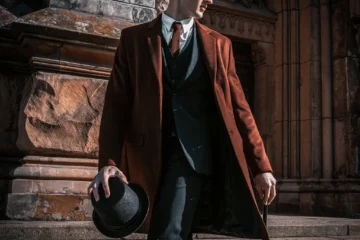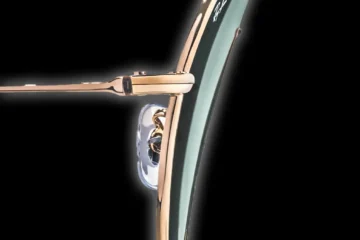Exploring men’s hairstyles over the last 70 years is like walking through a gallery of history’s changing faces. Each style, from the smooth, combed-back look of the ’50s to today’s bold man buns, tells a story not just of fashion but of society’s evolving heartbeat.
These styles didn’t just mirror the times; they helped shape the conversation around what it means to be a man, offering new ways to express individuality and confidence. This journey isn’t just about hair. It’s about the road men have traveled, pushing boundaries and redefining themselves, reflecting a world in motion.
The 1950s: The Birth of Rock ‘n’ Roll and Classic Cuts
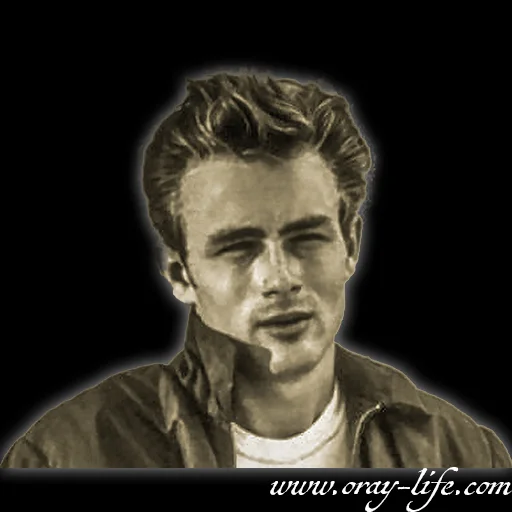
The 1950s were a turning point for men’s hair, sparking changes that would echo through time. Rock ‘n’ roll burst onto the scene, bringing icons like Elvis Presley and James Dean, who were more than just stars; they pioneered the style, introducing the world to the pompadour and slicked-back hair. These styles weren’t just fashionable; they screamed rebellion while oozing a cool elegance. The towering and bold pompadour symbolized the era’s love for flair and standing out.
On the flip side, the sleek, slicked-back look captured the essence of the decade’s smooth operators. Haircuts went beyond mere grooming; they were a loud, proud shout of youth and defiance against the old, stuffy norms. Barbershops turned into transformation hubs, places where a man could redefine himself. Walking out with a 1950s haircut meant carrying a piece of rebellion—a slice of the era’s spirit. This decade didn’t just change hairstyles; it showed that hair could be a canvas for individuality and a commentary on the times.
The 1960s: The Beatles and the Mod Movement
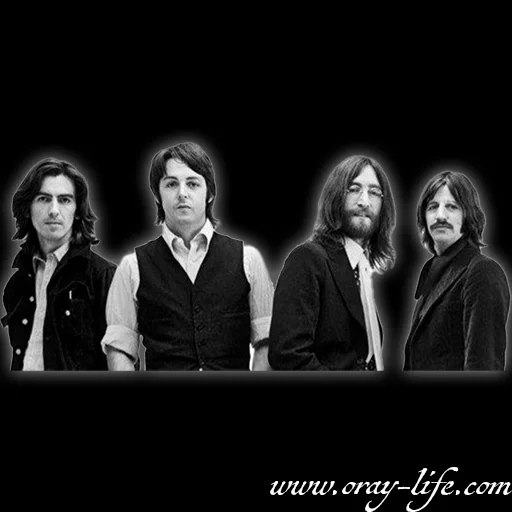
Before the 1960s rolled in, guys mainly sported short, neat haircuts—nothing to write home about. It was the standard, the safe choice. But then everything changed when The Beatles burst onto the scene. Imagine the shock and awe as these four lads from Liverpool stepped out with their ‘mop-top’ hairdos. It wasn’t just a new style; it was a rebellion. Suddenly, long hair wasn’t just about looking different, but about being different. It was about music, breaking free, and saying “no” to the old ways without uttering words.
Then there were the Mods, hailing from the bustling streets of London. They took the idea of rebellion and polished it. Their hair was still neat, but with a twist. Think sharp lines and geometric cuts—styles that make you do a double-take. It wasn’t just hair; it was art. And it made a statement, clear and loud: “We’re here, and we’re different.” This starkly contrasted with the upcoming hippie movement, which embraced long, flowing, carefree hair as a symbol of peace and love.
Hair became more than just a part of your look; it was a declaration of who you were and what you stood for. Whether you were a fan of The Beatles with their iconic ‘mop-tops’ or a ‘Mod’ with a penchant for sleek, eye-catching cuts, the 1960s turned hairstyles into powerful messages. This era wasn’t just about changing how men styled their hair; it was about setting the stage for the explosion of creativity and diversity in men’s hairstyles that would follow. It proved that hair could be a canvas for expression, a way to stand out and tell your story, showing the world who you really were.

The 1970s: From Disco to Punk
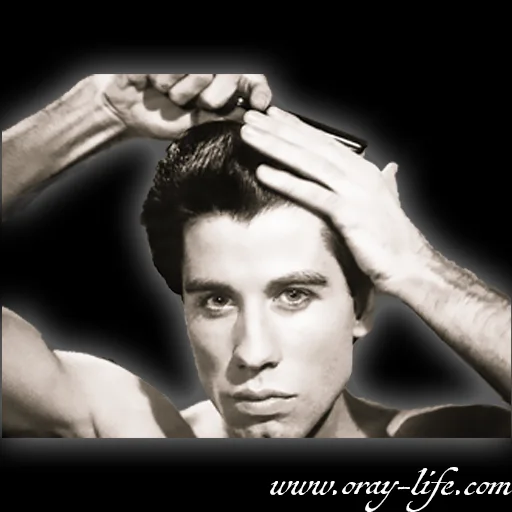
The 1970s shook up everything, from the tunes we jammed to what guys did with their hair. At first, it was all about disco—think big afros and hair so neat it looked like it was heading to a party. Remember John Travolta in “Saturday Night Fever”? His hair was all sleek and shiny, just like disco itself. But then everything flipped when punk stepped in. Punk was like the wild kid who didn’t follow the rules, with hair to match.
We’re talking about spiky ‘mohawks’ and messy looks that say, “I do what I want.” Bands like the Ramones and the Sex Pistols led the charge, showing off hair that was as bold as their music. The 1970s taught us that hair wasn’t just hair; it was a way to show off who you are, swinging from super neat to totally wild. It set the stage for all the fabulous styles that came after, proving your hair could shout out your unique style just as loudly as your clothes.
The 1980s: The Era of Excess

The 80s roared with hairstyles that screamed “be yourself” louder than ever before. It was the age of ‘more is more,’ and the ‘mullet’ ruled, telling the world you could be all business at work and the life of the party after hours. Yet, the mullet was just the start. Spiky hair, pumped with punk’s rebellious vibe and often dyed in eye-popping colors, dared to defy norms. Then there was the ‘NewWave’ gift of bold, gravity-defying looks, thanks to asymmetrical cuts and a generous splash of hair gel.
Not to be left out, Jheri curls added gloss and bounce, crossing over cultures and winning fans everywhere. And for the guys with pin-straight hair? The perm came to the rescue, bringing curls into their lives. The 80s wasn’t just about the hair; it was a loud, proud shout of the era’s wild heart through music, fashion, and those unforgettable hairstyles. Each cut and curl told its own tale, from a yearning to stand out to embracing a mix of cultures. It was a time when hair wasn’t just hair; it was a canvas of creativity and iconic styles that still turn heads and inspire us today.
The 1990s: Grunge and Minimalism

The 1990s split men’s hair trends into two camps: the unpolished ‘grunge’ and the understated minimalism. With bands like Nirvana and Pearl Jam at the helm, Grunge rocked the scene with its “too cool to care” attitude. Hair got longer, messier, and seemed to rebel against the 80s’ glitzy vibe, mirroring the gritty sounds of grunge music. It was more than just hair; it was a middle finger to the previous decade’s shiny facade, opting for authenticity and rawness instead.
Then came minimalism, a stark contrast with its neat, fuss-free haircuts like buzz cuts and crew cuts. This shift wasn’t just a style choice; it echoed the 90s’ economic struggles, leaning towards simplicity and practicality. The era stripped back the excess, favoring clean lines and a pared-down look that spoke to a broader craving for sustainability and straightforwardness.
Amidst these trends, the term ‘metrosexual’ emerged, softening the rigid boundaries of masculine grooming. The 1990s opened up a space where men could care about their looks without compromise or judgment, setting the stage for the diverse expressions of male fashion and grooming that followed.
The 2000s: The Emo Influence and the Return of Retro

The 2000s saw men’s hairstyles take a bold turn, diving deep into emo culture and tipping their hats to vintage vibes. Emo hair, famous for its long, often straightened locks veiling one eye, mixed punk rock’s fiery edge with a deep, thoughtful streak. During this time, guys got creative with their hair, showing off their unique feelings and who they were more freely.
Along with the rise of the emo scene, there was a renewed love for old-school cool. Styles like the pompadour and quiff got a modern makeover, blending yesterday’s charm with today’s flair. This mash-up of eras made the 2000s a playground of diverse hair trends, proving that revisiting the past could be just as exciting as breaking new ground.

The 2010s to Now: Diversity and Acceptance

The last decade has revolutionized men’s hairstyles, embracing a world where every cut tells a unique story. Forget the cookie-cutter cuts of the past; now, it’s all about the bold man bun, sleek undercuts, smooth fades, and textured crops. This shift isn’t just about fashion—it’s a celebration of personal identity, with men exploring styles that were once off-limits. Social media deserves a huge shoutout for this change, blasting new trends onto our feeds and inspiring guys everywhere to embrace their individuality.
This isn’t just hair we’re talking about; it’s a movement. As society leans into breaking down old-fashioned norms, men’s hairstyles have become a front-runner in the race toward a more inclusive and expressive world. Today, your hair can truly echo your personal style and attitude; no holds barred.
Conclusion
Looking back at how men’s hairstyles have changed in the last 70 years shows us much more than fashion trends. It’s like watching history unfold, showing us how people’s views on culture, who they are, and how they express themselves have shifted. We’ve gone from the neat, slicked-back hair of the ’50s to today, where trying new things and celebrating different styles is the norm.
Every hairstyle tells the story of breaking the mold and trying something new. Diving into the history of men’s hairstyles isn’t just about looking at cool cuts; it’s about seeing how being yourself and fitting in with the crowd have always been a bit of a tug-of-war. So let’s closely watch whatever comes next in the hairdo world.

Follow me on Instagram


